Context-Aware Dynamic Pruning for Speech Foundation Models
Context-Aware Dynamic Pruning for Speech Foundation Models
Abstract
This study proposes a context-aware dynamic pruning method for multilingual and multitask speech foundation models. The method achieves up to 30% reduction in inference cost while maintaining model accuracy. Unlike conventional pruning, which is fixed during training, our method enables flexible module-level pruning based on contextual cues such as language, speaker, and task during inference.
1. Motivation: Why Dynamic Pruning?
- Conventional LLMs and speech models are massive, making inference cost a real-world bottleneck.
- Speech tasks involve long temporal sequences, with heavy computational burden on the decoder.
- However, not all modules are needed all the time.
We hypothesize that:
- The required model structure varies across tasks and languages.
- Therefore, we propose dynamic pruning that adapts the model structure to the context.
2. Architecture Overview
🧠 Base Model: Open Whisper-Style Speech Models (OWSM v3.1)
- Encoder: E-Branchformer (Self-Attention + cgMLP)
- Decoder: TransformerDecoder
- Contextual embeddings (language/task) are added to the input
🧩 Pruning targets:
- Encoder: FFN1, glob-ATT, cgMLP, FFN2
- Decoder: Self-ATT, Src-ATT, FFN
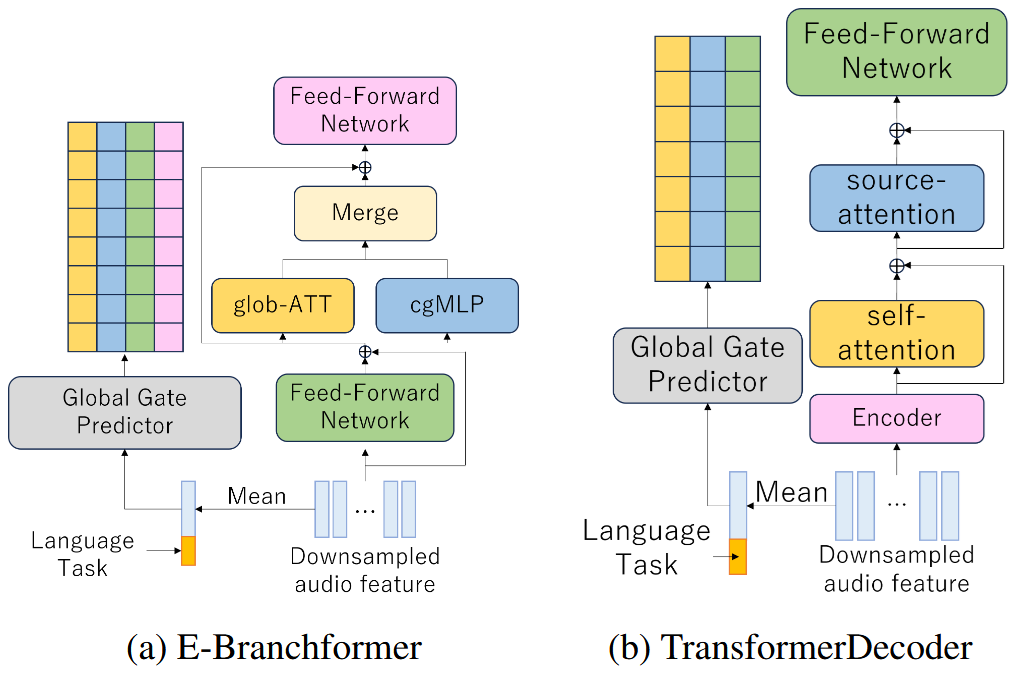
3. Proposed Method: Context-Aware Dynamic Pruning
🎛️ Gate Control for Each Module
- A binary mask is learned for each module and each layer to decide whether to use it or skip it
- Gumbel-Softmax with SGSE is used for binary decision with gradient propagation
📐 Loss = task loss + sparsity penalty
We included a squared term in the sparsity penalty.
Simply minimizing the absolute difference wasn't enough to enforce the target sparsity,
but the squared term worked significantly better in practice.

Here, alpha is a constant, s_target is the target sparsity, and g is the average sparsity across encoder/decoder.
4. Experiments
📊 Dataset
- Europarl-ST (German, French, Italian – approx. 20 hours each)
- Tasks: ASR (Automatic Speech Recognition), ST (Speech Translation)
🧪 Experimental Settings
- Sparsity target: 10% to 90%
- Evaluation done separately on encoder / decoder / both
- Metrics: ASR = WER, ST = BLEU
5. ASR Results
- With high sparsity (≥70%), pruning the encoder significantly degrades accuracy
- In particular, cgMLP proves critical — pruning it increases WER
- On the other hand, decoder pruning has little impact even at high sparsity
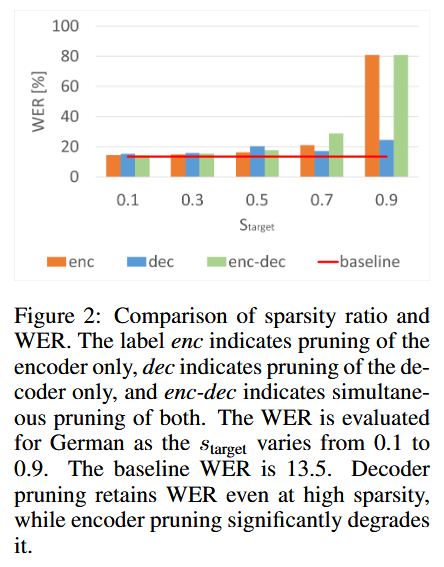
6. ST Results
- In ST, FFN and Self-Attention in the decoder are essential
- Encoder shows similar trends as in ASR, with cgMLP remaining important
- Compared to ASR, the decoder structure is more critical in ST
- We observed that source attention tends to activate toward the end of decoding, both in ASR and ST, especially when only the decoder is pruned.
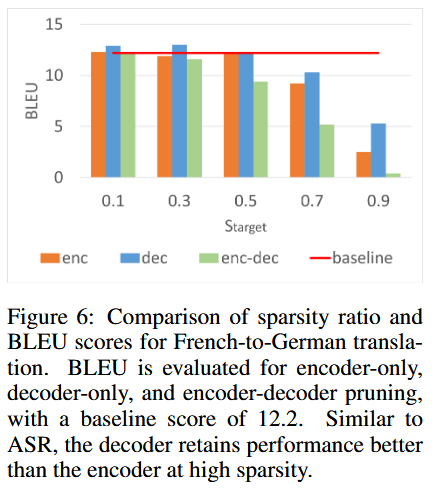
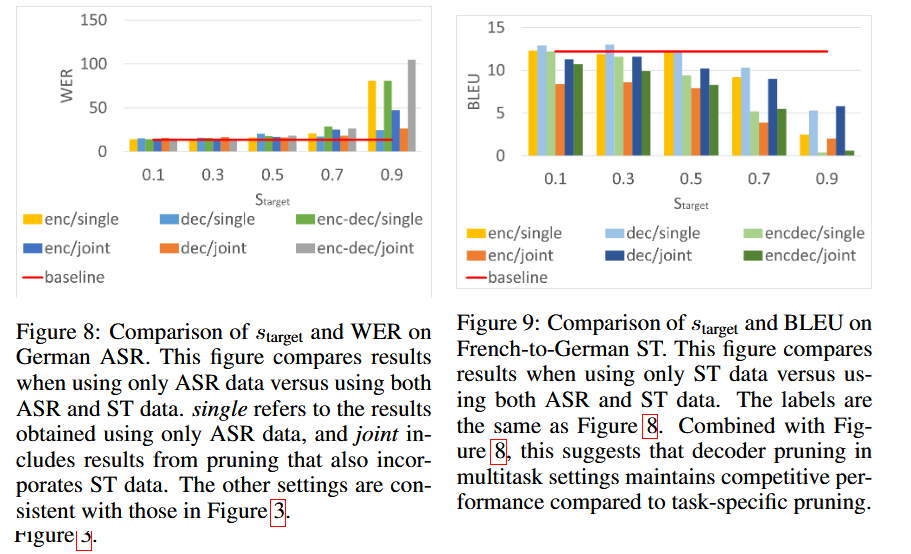
7. Multi-task Joint Training
- ASR and ST are trained jointly in a single model
- At inference time, pruning the decoder is more effective than pruning the encoder
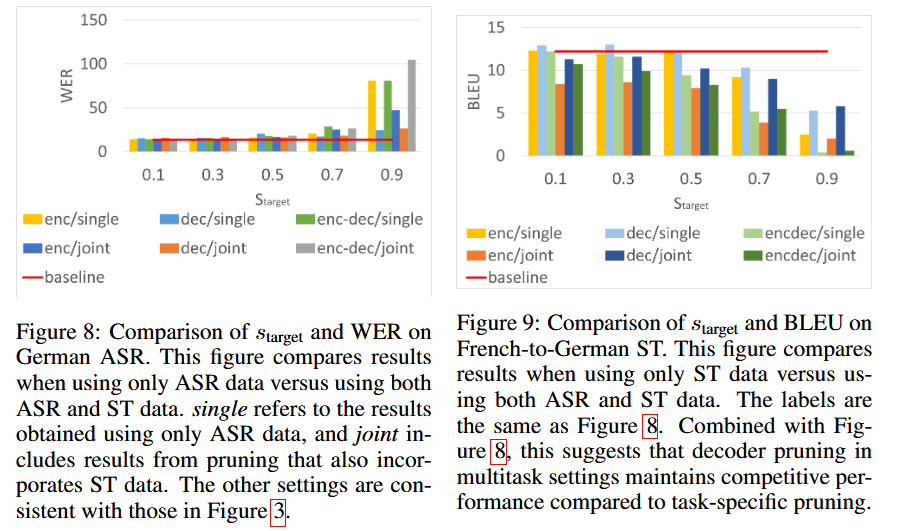
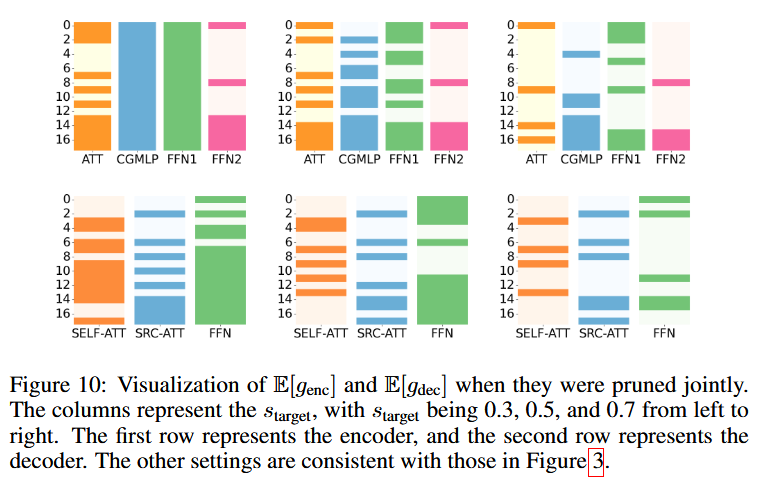
8. Inference Efficiency
⏱️ Speed vs. Accuracy
With 50% pruning on the decoder side:
- ASR: 28.6% reduction in inference time, with only 2.8% WER increase
- ST: 34.3% reduction in inference time, no BLEU degradation
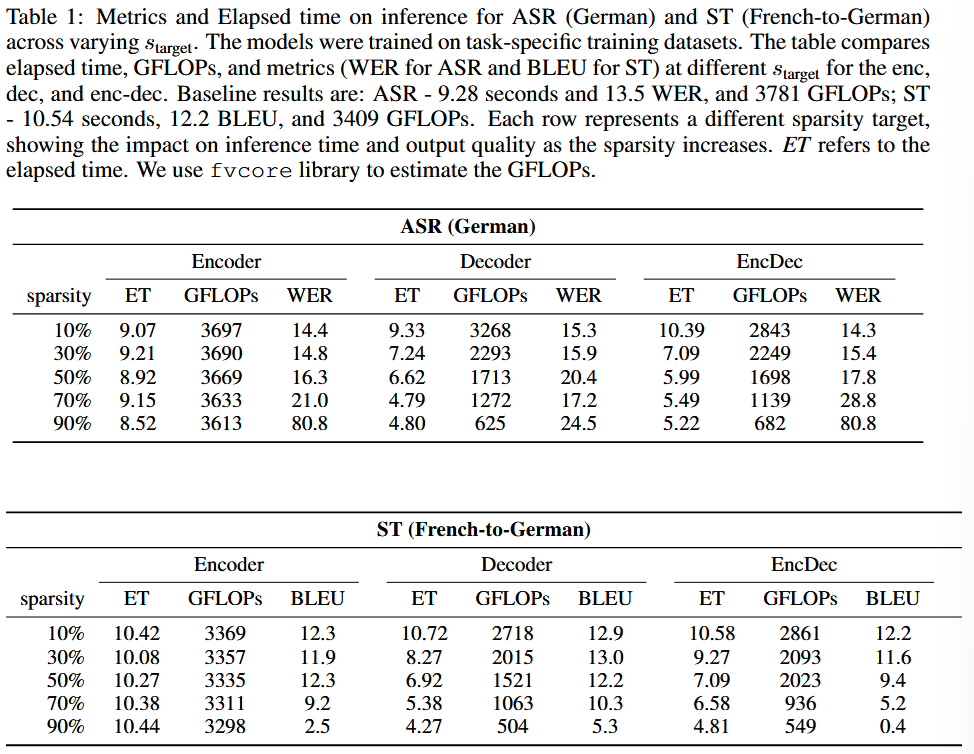
9. Conclusion
✅ Dynamic model structures can adapt based on task and language
✅ Pruning enables significant speedup without sacrificing accuracy
⚠️ cgMLP (local context) and decoder modules are especially critical depending on the task
🔧 Reproducible recipes are provided using ESPnet + HuggingFace
10. Citation
@inproceedings{
someki2025contextaware,
title={Context-aware Dynamic Pruning for Speech Foundation Models},
author={Masao Someki and Yifan Peng and Siddhant Arora and Markus M{\"u}ller and Athanasios Mouchtaris and Grant Strimel and Jing Liu and Shinji Watanabe},
booktitle={The Thirteenth International Conference on Learning Representations},
year={2025},
url={https://openreview.net/forum?id=u2QdCiOgwA}
}